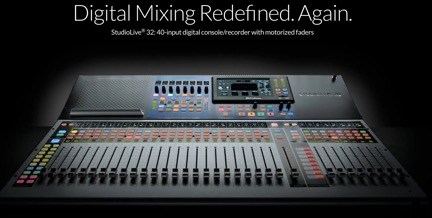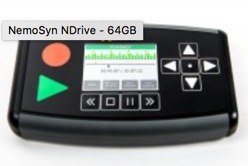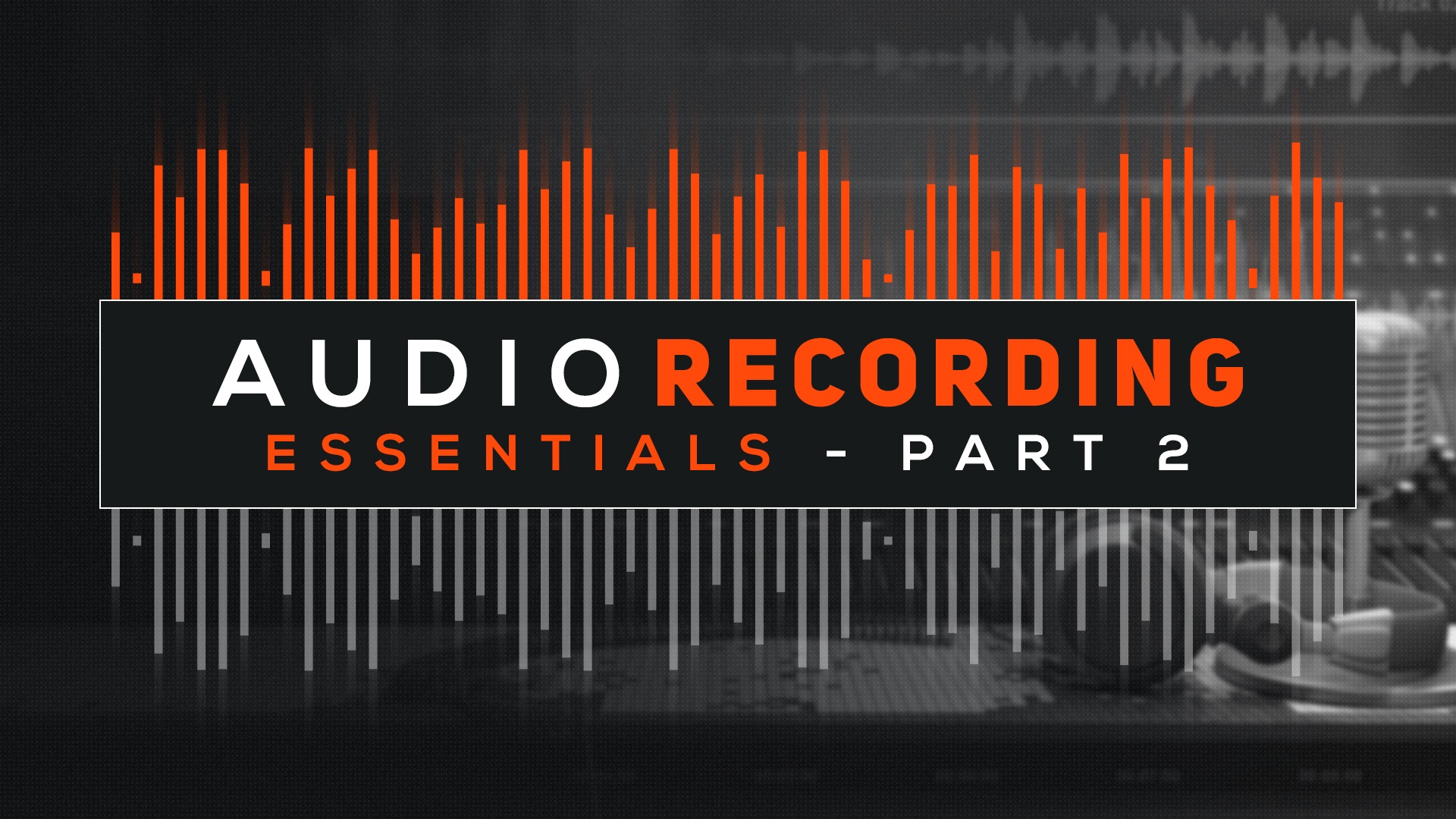In the last post (Audio Recording Essentials – Part 1), we asked some important questions, such as: “What are you recording?” and “Why are you recording?” We discussed that the tools required for one application may be completely different for another. We also looked at some various audio recording devices and formats that would work well for basic recording applications. We determined that SD/SDHC/SDXC cards are a very popular format to record to and used in many other devices, as well: cameras, computers, displays, etc. Now let’s talk about digital mixers for audio recording as well as some audio editing tips and tricks!
Audio Recording Essentials – Part 2
Many next-gen digital mixers have integrated recording capabilities along with the necessary functionality live sound production requires. Many brands and models fulfill this with the addition of a computer, a Mac or PC, along with a DAW, multitrack recording software. Be aware that many of the brands out there may have designed the mixer’s hardware, but not the recording software that accompanies the mixer. In other words, they weren’t designed to be an integrated solution. The companies that design their hardware and recording software to work seamlessly together are few: Avid, Presonus, and to some extent, Yamaha/ Steinberg. Most of the others are bundling a third party recording application to work with the console and, for church volunteer sound techs, it sometimes becomes a very frustrating experience to determine how to make the hardware talk to the software and vice versa.
A few digital mixer manufacturers have known this for a while and others have now come to realize this and have recently released models that don’t require a computer at all.
Allen & Heath QU series records 18 tracks to a USB Flash drive. Pretty cool.
Presonus just released two new mixer platforms that take this concept in some very interesting directions, which I would like to share with you.
For the small church that needs an affordable mixer, with an easy-to-understand work flow and all the inputs and outputs necessary to fulfill their needs, and at the same time combines recording functions that would typically require additional equipment, you may very well be a candidate for one of the three new AR Mixers from Presonus.

The AR Mixer is an Analog/Digital Hybrid. It has the look and feel of a very familiar (easy to understand) analog mixer, but has some very modern digital capabilities.
It combines the common functions of a mixer with a computer-recording interface (USB). If I connect a computer, I have the ability to record multiple tracks to a MAC or PC with two recording applications that are included and designed to work as one. One is the easiest to record platform on the planet, Capture, which basically records every input to a separate track with the click of one button. The other is Studio One Three Artist a DAW (Digital Audio Workstation) a very popular multitrack recording application. This program allows for editing and producing tracks into final mixes. However the AR Mixers also have integrated an SD card recorder into the design to enable stereo recording and playback whenever you require it.
Think about a live sound mixer that is also a computer interface and SD recorder all in one device that sells for not much more than a computer interface or SD recorder would by themselves. Very innovative and practical.
The other platform just now beginning to ship is the Presonus SL 32/16 Series 3.
This is the first digital mixer that enables you to record 34 tracks to an SDHC card without a computer. Pop a card in and record 32 individual tracks and a live stereo mix from any pair of Mix outputs simultaneously. No need to be a computer guru. Once the card is in, hit record and everything coming into the mixer is being recorded onto a separate track on their award-winning software, Capture. Once recorded, you can playback all the tracks flawlessly through your mixer for virtual soundchecks and allow plentiful time to practice honing your mixing skills.

In the next post, I will do a complete review of this game-changing platform. Stay tuned!
There is another device that may interest those of you who have one of the following digital mixers with USB interfaces.
- Behringer x32*
- Behringer X32 Compact*
- Behringer X32 Producer*
- Behringer X32 Rack*
- Behringer X32 Core*
- Midas M32*
- Midas M32R*
- Midas M32C*
It’s called the NemoSyn N Drive. Details are here:

Many of you may be intimidated by the thought of editing a recording. The good news is we’re not using razor blades and splice blocks any more right?
Editing a recording is almost as easy as editing a Word document. I would like you to take some time to watch a short series of videos that illustrate just how simple it can be to edit a sermon.
- Editing the Sermon – Intro and Enhancing the Sound using Studio One
- Editing the Sermon – Adding a Bumper using Studio One
- Editing the Sermon – Rendering a WAV with PreSonus Studio One
- Editing the Sermon – Project Page in Studio One
As you can see, it can be a much easier process than you may have thought and the tools that are available these days allow even the smallest churches to incorporate them. If you have any questions, please let me know and I will be happy to help you with your concerns.
For a deeper dive into recording, I would highly recommend “The Recording Engineer’s Handbook 4th Edition “ by Bobby Oswinski

